Short on teachers, Michigan schools try to grow their own
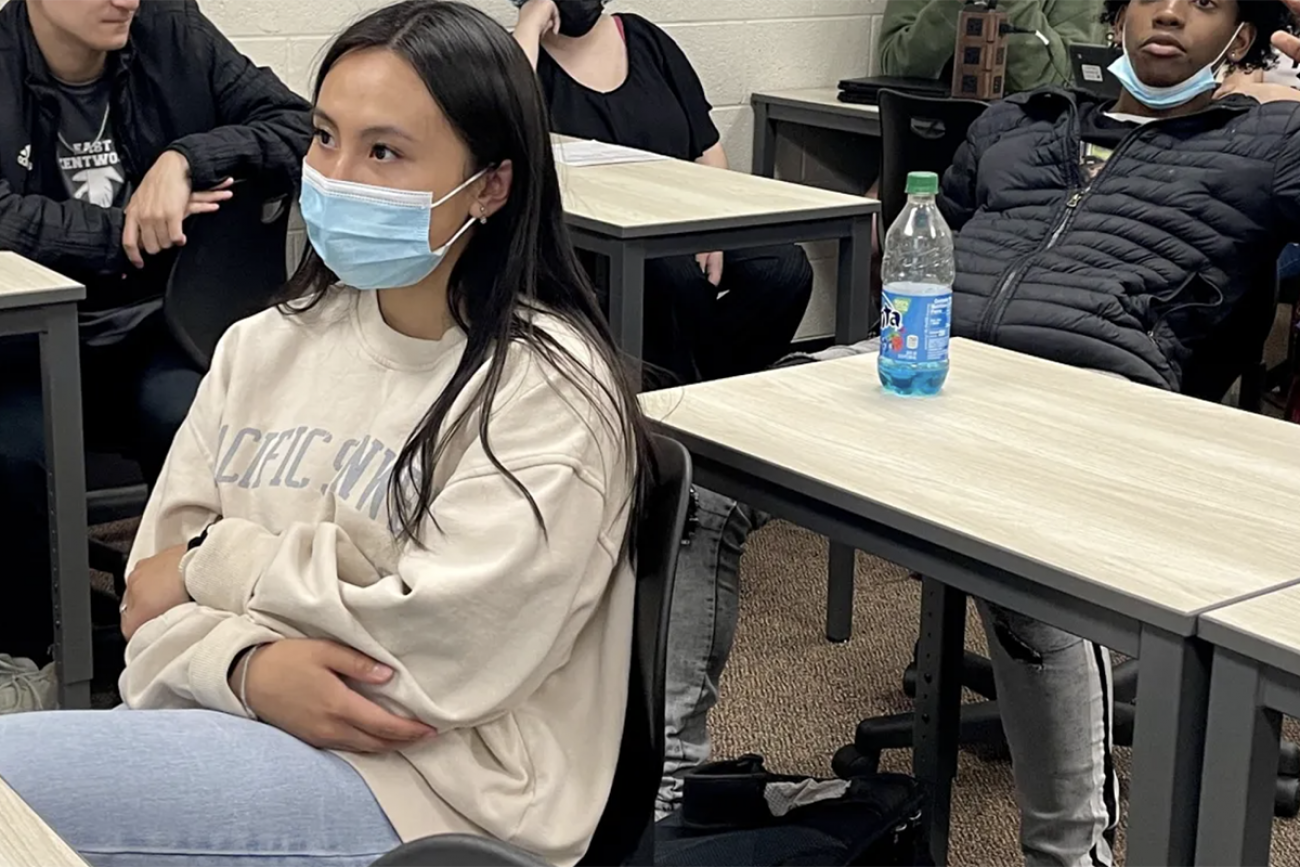
KENTWOOD—Logan Welch, 18, sat in the back of a high school English class typing on his laptop, but he wasn’t taking notes on the poem like everyone else.
Instead, he was recording observations of the teacher — noting the way she quieted a disruptive boy, used sarcasm to relate to students, and engaged students by asking them to rank poems.
Finding teacher
A teacher shortage crisis is brewing in school districts across Michigan. This is the second article by Bridge Michigan and Chalkbeat Detroit exploring the issue.
Last week: Michigan’s teacher shortage: What’s causing it, how serious is it, and what can be done?
Coming next: A look at what universities are doing to graduate more education majors.
And he gained a new perspective on what it might be like for him to be at the front of that classroom someday — as a teacher, with his own group of high school English students.
Related:
- Michigan’s teacher shortage: What’s causing it, how serious is it, and what can be done?
- Michigan teen looks to college, but after pandemic she questions her drive
- Big and small groups, during and after class: tutoring is all over the map
- Without state help, school tutoring strains to halt COVID learning loss
“When you’re in school it seems like teachers just give a lesson, but there’s so much that goes into it, so much thinking they have to do about different learning styles,” said Welch, a senior at East Kentwood High School in the suburbs of Grand Rapids.
Welch is one of 20 East Kentwood students in Educators Rising, a national program offered as an elective for high school juniors and seniors considering careers as teachers. The hope is that some of them go on to study education in college, then return to teach in East Kentwood.
State Superintendent Michael Rice sees such grow-your-own recruitment programs as an important part of his multi-pronged strategy to expand the teaching pool in Michigan. The state faces a teacher shortage at a most inopportune time: when students need more educational resources to catch up academically after two years of pandemic-related disruptions.
Although Michigan’s teaching force is larger than it was a decade ago, and the student population is smaller, administrators struggle to get fully certified teachers in classrooms where they’re most needed, especially in disciplines such as special education and world languages.
Another challenge: diversifying the pool of future teachers so it’s more representative of the student population.
The grow-your-own strategy can help with that, too, Rice said Tuesday.
“Our student body is more diverse than our teaching staff, so not only does this help in terms of recruitment, it provides the opportunity to diversify the workforce as well,” he said.
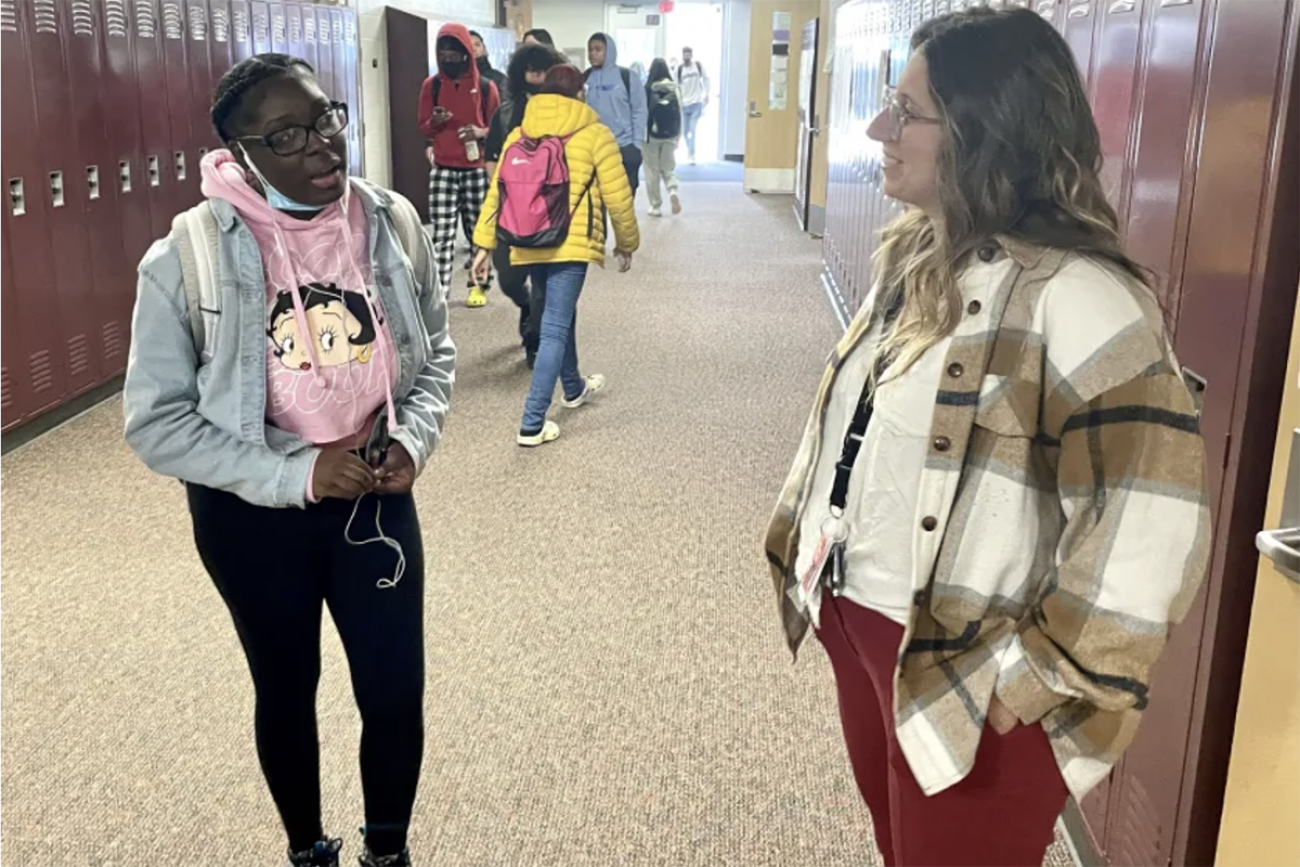
Helping students see themselves as teachers
Jasmine Ramahi has been teaching East Kentwood’s Educators Rising course for two years. She believes more people would enter the education field if they could picture themselves as teachers. Sometimes, she said, someone else has to see them that way first.
What makes a good teacher is not just about academic achievement, she said. “Teaching is about: Do you understand empathy? Do you like to be around people? Do you like to empower people?”
For senior Shawn White, the answers were yes, yes and yes.
Ramahi, who had been White’s Spanish teacher, saw promise in him. She encouraged him to sign up for the Educators Rising course.
“When she told me this class revolved around teaching, I didn’t really see myself in that field,” White said, adding: “I didn’t think I would have the nerve” to teach.
That was a year ago.
Two weeks ago he was teaching a lesson about common grammar mistakes to a high school class of English language learners. It was the culmination of a year of observing other teachers and studying learning styles during Ramahi’s course.
Now White can envision himself leading class discussions, crafting lesson plans and building relationships with students.
“This class opened another door, another opportunity,” White said. “Teaching is something I could see myself going into.”
As graduation approaches, White has been thinking a lot about the teachers he’s had over the years. Only one looked like him: male and Black.
That thought makes the idea of going into teaching — particularly at a diverse school like East Kentwood — feel even more impactful.
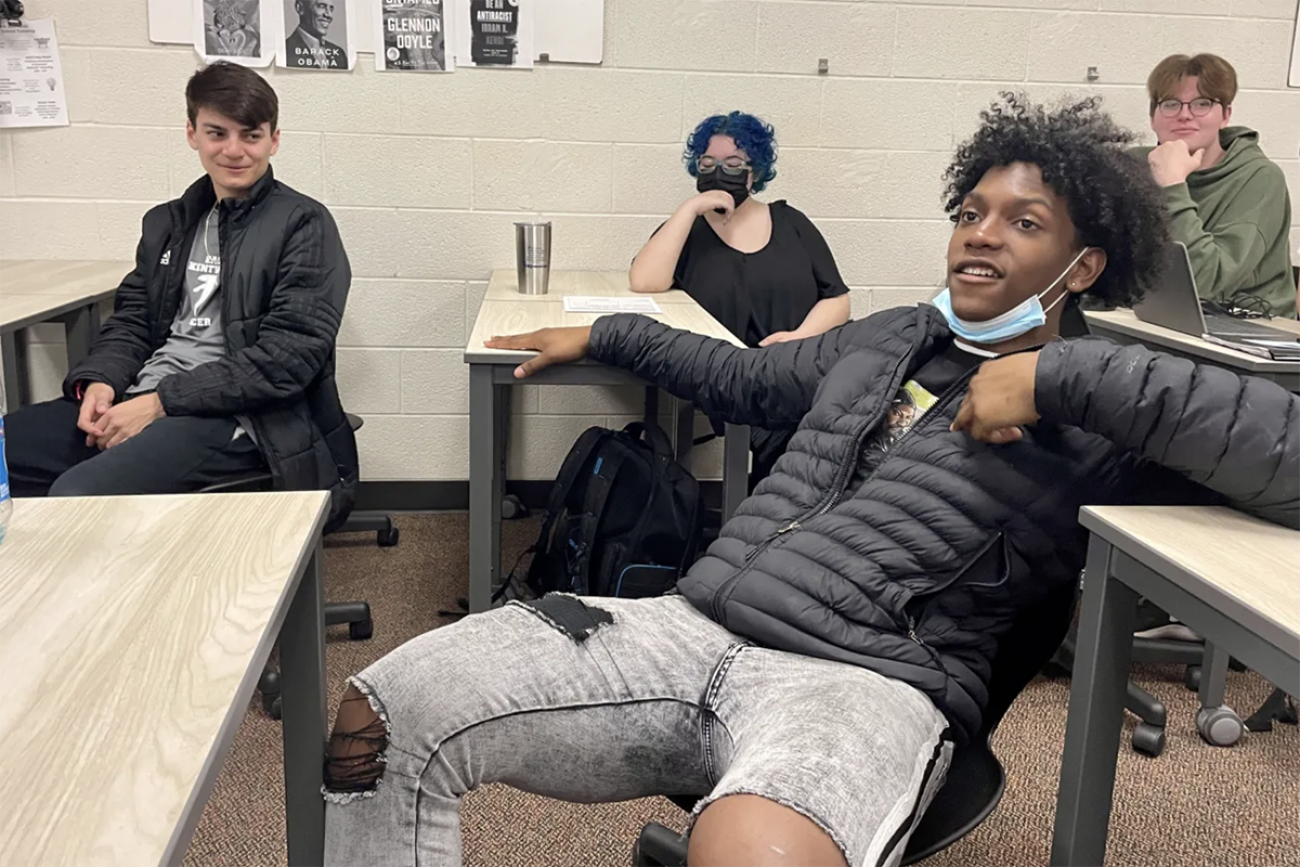
“Being able to see someone like me, the students might get a deeper connection,” White said. “If they have that trust, if they have that relationship, it motivates them to learn more and really enjoy the class.”
Equity, diversity and representation are topics that come up often in Ramahi’s class.
“We talk very openly about the need for our teaching staff to look like our hallways,” Ramahi said. “We talk about the power it has to have students who look like you.”
Statewide, 17.7 percent of students are Black, but that’s true of only 6.6 percent of teachers.Rice, the state superintendent, wants to do better.
Programs like Educators Rising could help. Nationally, 52 percent of students in Educators Rising courses are people of color.
The growth of Educators Rising
The grow-your-own concept isn’t new, but these kind of programs have proliferated in the last few years as a response to the teacher shortage.
Eighty-five years ago, Future Teachers of America chapters began cropping up in high schools to help inspire promising students to become teachers. The group morphed into the Future Educators Association in 1994 when the professional organization Phi Delta Kappa International took it over from the National Education Association.
Seven years ago, Phi Delta Kappa relaunched the program under the name Educators Rising. Seventeen schools used the curriculum that first year. Now, 11,180 high schools across the country use it. Thirty-one of them, including East Kentwood, are in Michigan.
Participating districts pay $6,500 for each classroom using the curriculum.
In addition to the classroom observations, the curriculum includes lessons on professionalism, bias and equity, small group instruction, classroom management, lesson sequencing, culturally responsive teaching and assessing learning.
About half of Educators Rising’s students have always had teaching on their minds — the kinds of kids who used to line up their stuffed animals and play school, said Joshua Starr, executive director of Phi Delta Kappa and former superintendent in Maryland and Connecticut. The other half are teenagers who didn’t consider the profession until they learned their school was offering a course on it.
So far, 103,000 students have completed Educators Rising courses. It’s unclear how many of them enrolled in college education programs or have become certified teachers. Starr said it has been difficult to track students once they’ve graduated high school, but Phi Delta Kappa is hoping to work with states to collect data.
Sixty percent of teachers already end up working within 20 miles of where they went to high school, according to Educators Rising.
Starr urges districts to reaffirm the grow-your-own philosophy by guaranteeing jobs to their Educators Rising students who become certified teachers. “We’d like to have signing days with graduates signing letters of intent to come back,” he said.
His organization also is working to connect graduates of the program once they arrive on college campuses. About three dozen chapters of Educators Rising Collegiate have cropped up in the last year as student organizations, Starr said.
“We offer some programming and support, but it’s really student-driven,” he said. “It started because our kids actually asked us after they graduated. They said, ‘Hey, we’re in college now, and we’d love to network.’”
Other programs in Michigan
The Michigan Department of Education last year awarded $10,000 grants to help 44 schools develop opportunities for students to explore careers in education.
And more support could be coming.
Gov. Gretchen Whitmer’s budget recommendation included $150 million to support district grow-your-own programs for support staff who want to become teachers. The House budget proposal added $74 million and added eligibility for programs aimed at high school students. The final budget is subject to negotiations between Whitmer, a Democrat, and Republican legislative leaders.
Separately, state Rep. Sarah Anthony, a D-Lansing, has introduced legislation that would require the MDE to develop or adopt a model “teacher cadet” program that districts could choose to offer to students.
Many schools already are using other curricula or developing their own.
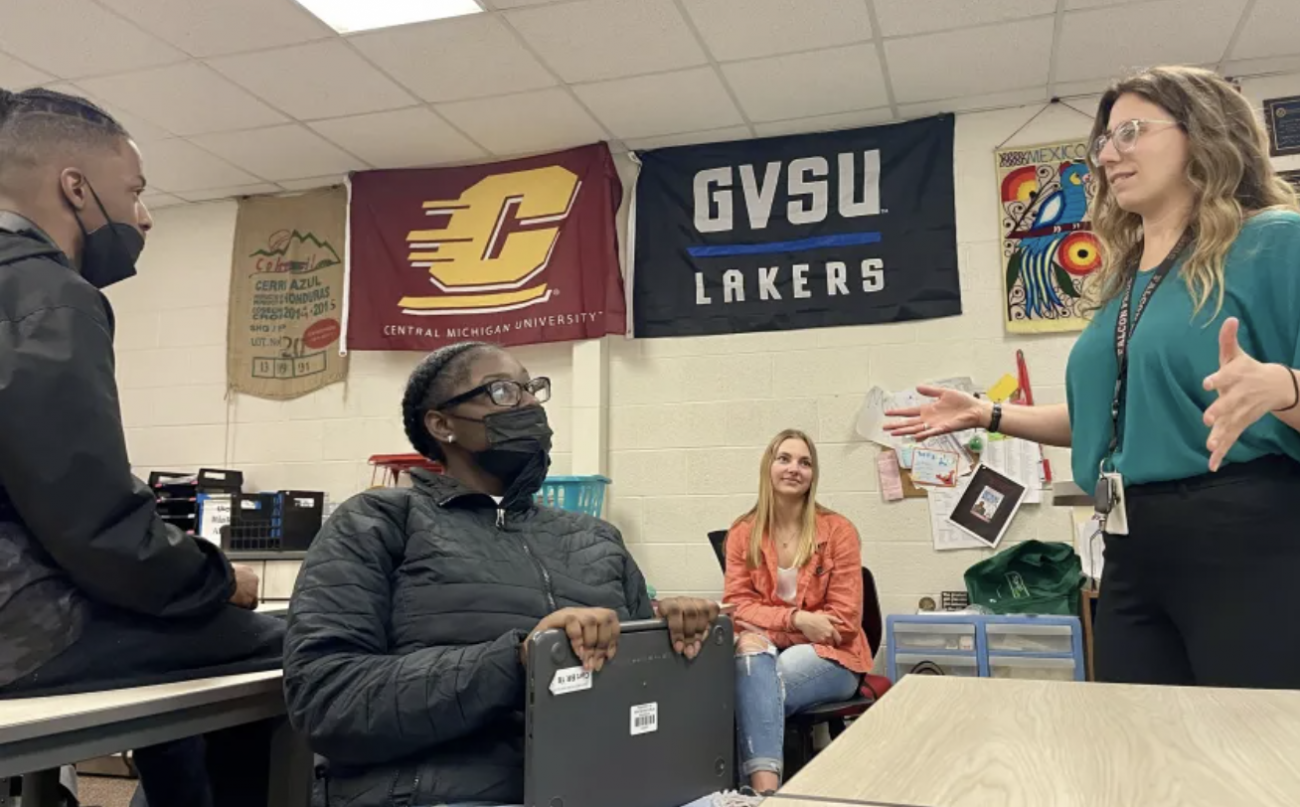
This fall, Detroit Public Schools Community District will launch its Rise to Teach initiative to encourage students to pursue careers in education. The district plans to develop the initiative into a formal pathway to teacher preparation programs. Rise to Teach students who go on to become certified teachers will be guaranteed jobs in the district, said Assistant Superintendent Ben Jackson.
Wyoming High School near Grand Rapids started offering an exploratory class this school year to 17 students who expressed interest in teaching.
And Charlevoix-Emmet Intermediate School District plans to launch its Future Educator Academy in September. Teacher Erin Luckhardt’s goal is to help students in Charlevoix and Emmet counties determine early on whether the educator profession is a fit for them and to encourage those who go on to receive education degrees to return to teach in the area.
Luckhardt is working with districts within the ISD to guarantee job interviews for students who take her class and go on to become certified teachers.
Not all graduates of the program will wind up pursuing teaching, and that’s OK with Luckhardt.
Starr of Phi Delta Kappa agreed.
“The ideal is that every student who goes through the program is inspired and says, ‘Yes, I’m going to be an educator,’ but the reality is some of them will say this isn’t for them,” he said.
The curriculum is designed to give prospective teachers an idea of what the profession would be like – “warts and all” – Starr said. “We try to make sure their eyes are wide open.”
In East Kentwood and Wyoming high schools, that has meant frank classroom discussions and opportunities to interact with guest speakers that include experienced teachers, principals and superintendents.

What students noticed about teachers
But a big part of the curriculum is delivered through observation.
One afternoon in April, each of Ramahi’s 20 prospective teachers observed a different freshman class. They took note of the way teachers managed behavior, built relationships, developed lessons that incorporated different cultures, and used alternative instructional methods to reach students with different learning styles.
Welch visited a class tasked with identifying imagery in slam poet George Masao Yamazawa’s piece about growing up as a child of immigrants. Students worked at their desks while their teacher, Jessica Baker, circulated and spoke with them individually.
Welch, the 18 year old, zeroed in one such interaction.
“There was a student who kept interrupting and giving answers that were obvious,” Welch recalled. “Instead of telling him to be quiet, she acknowledged him and then moved on.”
It worked, Welch said, because the teacher had already established a rapport with the student earlier in the school year. That’s something he might not have realized before taking Educators Rising, he said.
“I see now that there’s so much that goes into being a teacher and just how heavy the responsibility is for teachers,” he said. “My eyes have definitely been opened to that.”
Another student, Lisa Ha, who is considering a career in special education, visited a class of students who have developmental disabilities. She held freshman Tyson Johnson’s hand to reassure him during an occupational skills activity.
In the band room, Abigail Best noticed how a music teacher sat next to students to be at eye level during one-on-one conversations.
Rodnika Dickens observed an English class full of well behaved freshmen reading at their desks while quiet nature sounds played on a speaker in the background. She attributed their behavior to classroom management skills.
“It wasn’t like the teacher was strict, but they knew when they came in the classroom what they were supposed to do,” Dickens said the next day in a small group discussion with Educators Rising classmates. “They knew the routine.”
Ramahi said her class’s learning objectives are so closely aligned with introductory college education courses that some universities in Michigan are considering granting college credit for the East Kentwood course.
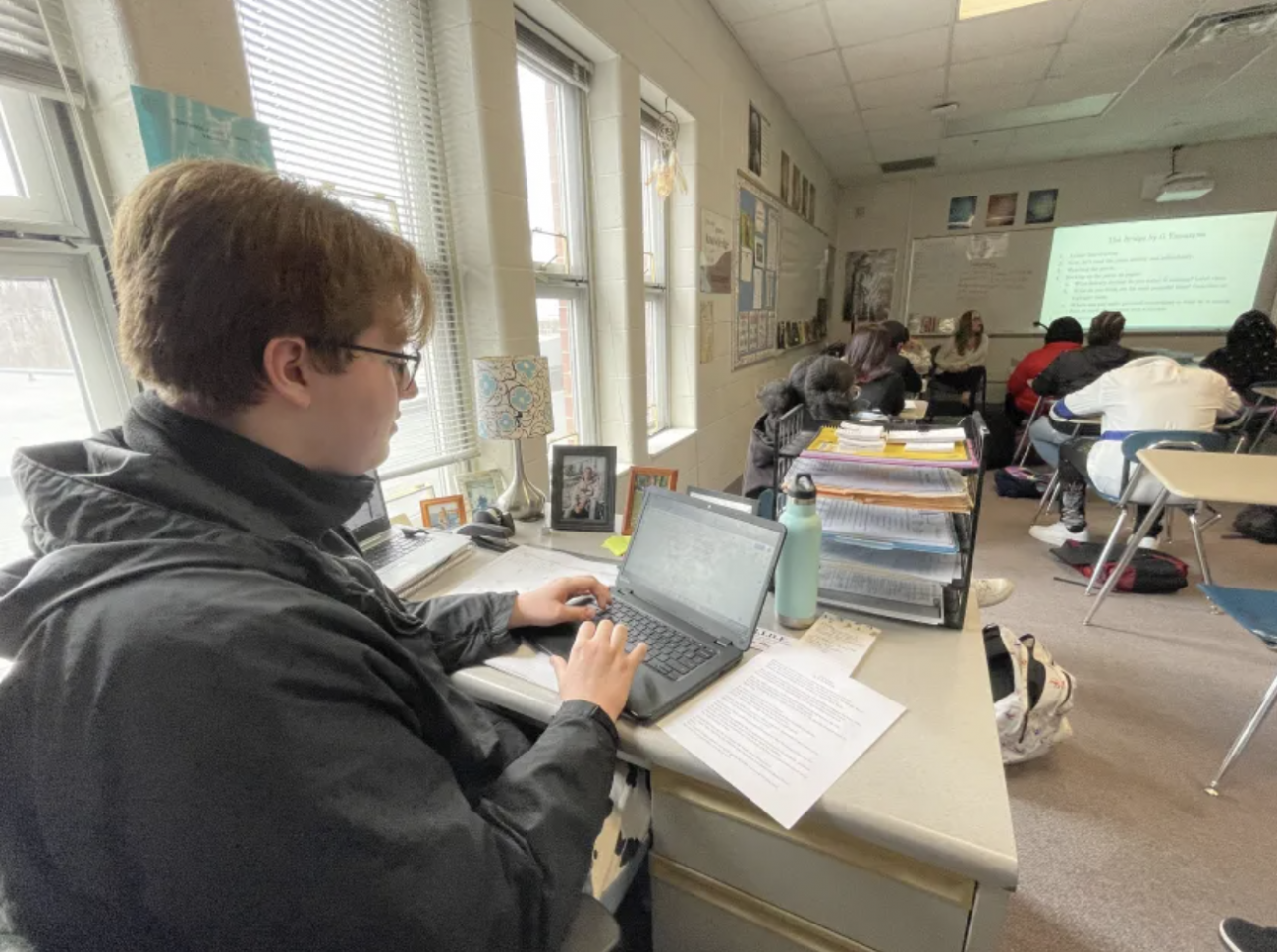
Most of the students in her program still haven’t decided for sure what their majors will be, but Welch has made up his mind.
He’s headed to Michigan State University to begin training to be a high school English teacher.
Educators Rising has prepared him well, he said.
“I’m glad for this class,” Welch said. “There aren’t always a lot of classes where you actually get to do something that you’re passionate about and that could help you in the future.”
Tracie Mauriello covers state education policy for Chalkbeat Detroit and Bridge Michigan. Reach her at tmauriello@chalkbeat.org.
Michigan Education Watch
Michigan Education Watch is made possible by generous financial support from:
Subscribe to Michigan Education Watch
See what new members are saying about why they donated to Bridge Michigan:
- “In order for this information to be accurate and unbiased it must be underwritten by its readers, not by special interests.” - Larry S.
- “Not many other media sources report on the topics Bridge does.” - Susan B.
- “Your journalism is outstanding and rare these days.” - Mark S.
If you want to ensure the future of nonpartisan, nonprofit Michigan journalism, please become a member today. You, too, will be asked why you donated and maybe we'll feature your quote next time!






